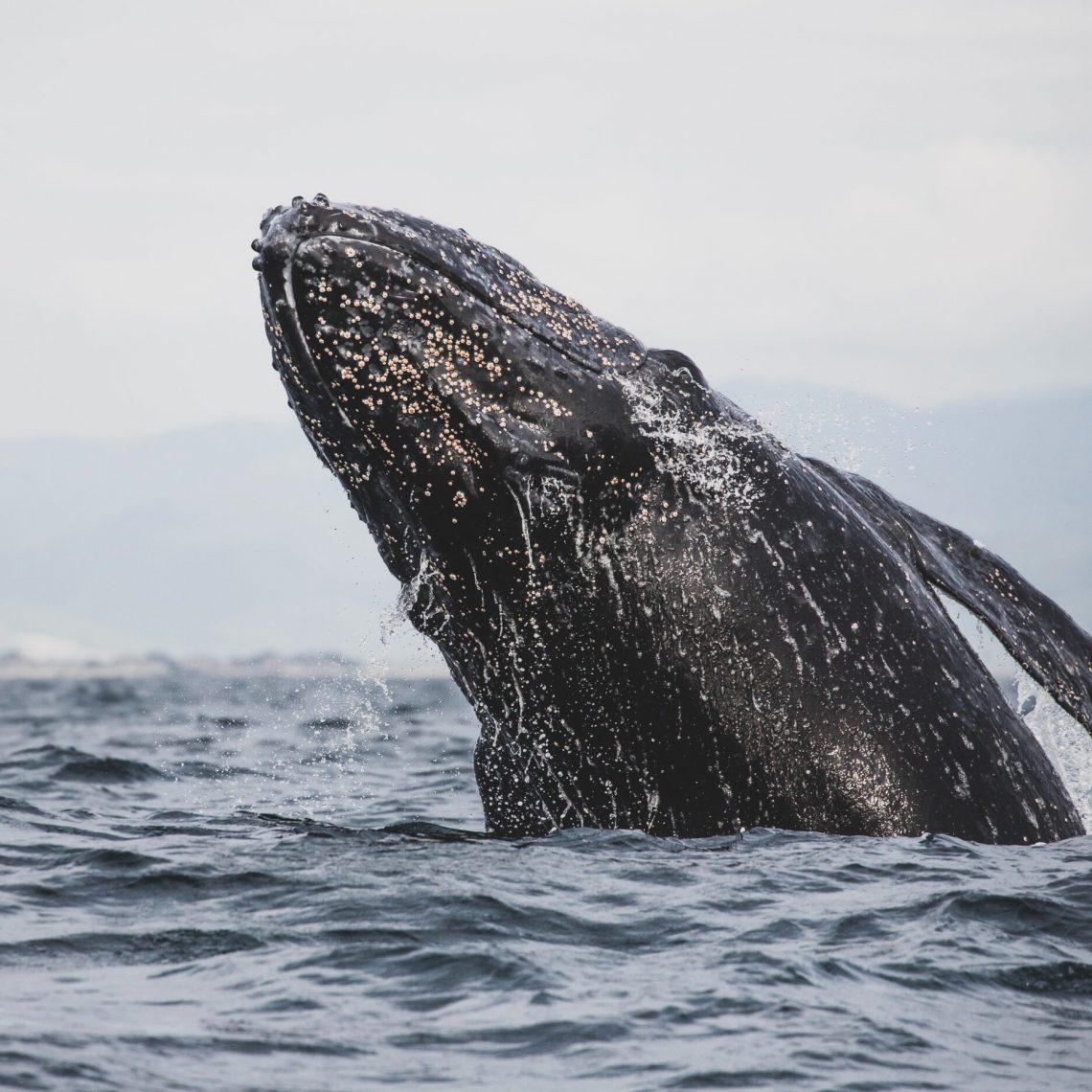Oregon Coast Whale Migration
Approximately 20,000 whales migrate southward past the Oregon coastline from mid-December to the end of January to mate and birth calves each year. Winter migration brings the highest concentration of whales, but winter weather can make viewing them from the coastline problematic. Stormy seas keep them farther from the rocky shore. They then make a return trip, calves in tow northward, but are distributed throughout mid-March through the first week of June. Spring migration brings the whales closer to shore, from a 1⁄2 mile (0.8 km) to 3 miles (5 km) out, and visibility during spring improves for better viewing. The whales are less concentrated as juveniles, adults and mother/baby pairs travel at different times.
The last week of March is usually the beginning of the migration past Oregon and continues through the first week of June. Perfect time for Oregon Whale Watch Week, taking place March 28 to April 2, during which volunteers will be staffed at 17 whale watching sites to help people spot the swimming cetaceans from shore. Mothers and calves are the slowest moving and usually observed passing Oregon during the month of May. July brings summer feeding whales with peak viewing in August through October. The Depoe Bay Whale watching center boasts prime view as it is out of the weather, is free to enter and has binoculars for public use.
Summer is when the whales are the closest to shore making them easier to observe. They sometimes spend the summer off the coast of Oregon instead of traveling to the Alaskan feed grounds. There are clouds of crustaceans (Mysidacea) which hover around the kelp beds. Some whales linker here and feed very close to shore with the best viewing during August through October.
Gray whales are the most commonly sighted whales year round along with humpbacks, minkes, orca, and sometimes sperm and blue whale. Prime viewing is during the migration seasons of December through January, and March through June. Approximately 2500 unique whale individuals can be seen returning past the coastline.
Threatened Species
The herd of gray whales that migrates along the Oregon coast have made an impressive comeback from near extinction. Their existence has been dwindled once in the mid-19th century and again mid-20th century. There are approximately 18,000 today. There is a similar heard that migrate along the coast of Japan. They currently number only about 103, and are at grave risk of going extinct. The International Whaling Commission, represents 21 countries, is within one vote of allowing whaling once again. Whaling extinction is a real possibility today. More information can be found at the contact page for the Whaling Commission, including how to contact the commissioner.
Whale Spotting Tips
Look for whale spouts with your naked eye by scanning the ocean area. They can be pretty far in the distance. Break up the area and have a few people search to cover more sea. Once you see a spout, focus more closely with binoculars. A charter boat can provide up close views. Some people prefer the view from above—from an airplane. Both charter boats and air services are available. Calmer days are best, whether by land, sea, or air.
Gray whales are the most commonly seen off the Oregon Coast. They are baleen whales and each adult is about the size of a school bus. When feeding for zooplankton, including mysid shrimp, the whales roll on their right sides and suck in the water. They force the water through the fringed baleen plates that hang from either side of their upper jaw, filtering and trapping organisms. It’s not one spout you see in horizon, but two! This is the case for all baleen whales. It’s not a fountain of water, but of mist that condenses immediately as warm moist air is exhaled under high pressure from their lungs.
Oregon Coast Charter Companies
- Whale’s Tail Charters, LLC – Depot Bay
- Dockside Charters and Whale Watching Tours– Depot Bay
- Whale Research EcoExcursions, LLC – Depot Bay
- EcoTours Of Oregon Day Tours – Different locations
- Newport Tradewinds – Newport
- South Coast Tours – Port Orford
Did I miss your favorite? Is there something you were hoping to find in this article that is missing? Please drop me an email anytime: [email protected]. Hope to see you out there!





